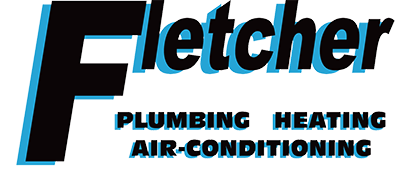We all like saving money on our monthly utility bills, but you should know there’s a way to do it when you aren’t even home.
It starts with your thermostat. By learning more about its special features and settings, you can tailor the temperature to your needs. That means you can have different temperature settings for when you’re home, away or even when you’re asleep.
If you’re willing to make these adjustments, you can enjoy comfy temperatures while cutting down your energy bills. Here are some ways your thermostat doesn’t have to use up all your summer spending money:
While at Home
Pretty much whenever you’re home, you want to enjoy a comfortable temperature. For the most part, you probably have your thermostat lower in the summer while you are in the house to appreciate the cool air.
But the ideal temperature for when you’re in your home during the summer is usually between 78 and 80 degrees Fahrenheit. This way, you’ll keep cool while keeping your energy bill more manageable.
While Away
If you’re setting the temperature for when you are out of the house in summer, it’s extremely common to move the thermostat higher than you would if you were in the house.
Depending on the local climate or your home’s location, you can set the temperature as high as 88 degrees while no one is home before lowering it back to the sweet spot of 78-80 degrees once you’re home again. This way, your air conditioning system isn’t working around the clock to cool an empty house.
While Asleep
When it comes to sleeping in the summer, you want a nice cool temperature. You should try and keep things between 68-72 degrees Fahrenheit. There’s less risk of getting too hot or too cold while you’re trying to sleep.
Additional Ways to Reduce Energy Use:
- Put in a smart thermostat: Using a smart thermostat in the summer can lower energy costs by automatically adjusting to your lifestyle and personal preferences. A smart thermostat manages the temperature if you are home or sleeping, while allowing it to get warmer when no one is around. Using reputed brands and models such as the Lennox iComfort, you have the ability to remotely access and change the temperature through your smartphone, tablet or laptop. Planning smart thermostat installation in your Smyrna home can be the simplest strategy for maintaining comfortable, yet energy-efficient temperatures whether you’re at home or across the country.
- Update your existing HVAC system: A new HVAC system saves money right from the start. If a system boasts high energy efficiency, you can also count on lower utility bills since more efficient equipment requires less energy to reach your preferred temperatures. Air conditioning installation in Smyrna is a great way to beat the heat in the summer.
- Schedule annual AC maintenance: Investing in or ignoring regular air conditioning maintenance in Smyrna can have a serious effect on your total monthly energy use. With regular cleaning of the coils, checking for damage and clearing air vents of dust and debris, this can help your HVAC system run more efficiently. Higher energy efficiency will also reduce strain on key parts and lowers operational costs, lowering total energy use and eventually the total monthly bill.
- Replace your air filter regularly: Regularly changing the air filters in your HVAC system saves money by keeping airflow as smooth and consistent as possible. When filters are old and less effective, an AC unit has to work harder, and this greater strain could shorten the system’s life span and lead to breakdowns.
- Confirm your attic is sufficiently insulated: Insulation is one of the key components in any energy-efficient home, keeping the hot air outside and the cool air inside during the summer. The North American Insulation Manufacturers Association (NAIMA) offers an official recommendation stating homeowners in souther states should install at least 13-14 inches of insulation, while those in northern U.S. states should have 16-18 inches.
- Check your air ducts: A leak in the air ducts could increase your energy bills much more than 20 percent, plus it can affect equipment such as your water heater, clothes dryer and other appliances throughout your home. Finding any leaks fast and sealing them can help with both these issues.
- Seal all other leaky spots in your home: Sealing up other leaks in your home with caulk, foam sealant or weather-stripping helps keep things cooler during those hot summer days. You should also check for any gaps around windows, doors and even outdoor fixtures. Devoting time and effort to sealing leaks now can help you save a lot in the long run.
